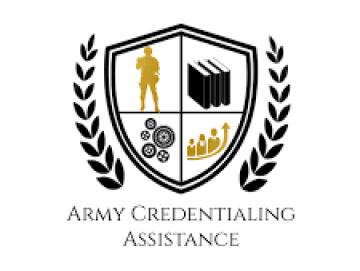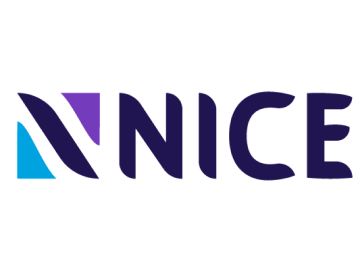Chief Information Security Officer (CISO)
Cybersecurity Program Director, Information Security Officer (ISO), Information Security Manager, Head of Information Security IT/ICT & Security Officer
Manages an organization’s cybersecurity strategy and its implementation to ensure that digital systems, services, and assets are adequately secure and protected.
Mission
Defines, maintains, and communicates the cybersecurity vision, strategy, policies, and procedures. Manages the implementation of the cybersecurity policy across the organization. Ensures information exchange with external authorities and professional bodies.
Deliverable(s)
- Cybersecurity Strategy
- Cybersecurity Policy
What is covered in EC-Council’s Certified Chief Information Security Officer (C|CISO)
Main Task(s)
Main Task (s)
Covered
C|CISO Domains
Define, implement, communicate, and maintain cybersecurity goals, requirements, strategies, and policies, aligned with the business strategy to support organizational objectives.
Yes
Domain 01, 03, 04, 05
Prepare and present the cybersecurity vision, strategies, and policies for approval by senior management, ensuring their execution.
Yes
Domain 01, 03, 04, 05
Supervise the application and improvement of the Information Security Management System (ISMS).
Yes
Domain 01, 03, 04, 05
Educate senior management about cybersecurity risks, threats, and their potential impact on the organization.
Yes
Domain 01
Ensure senior management approves the organization’s cybersecurity risks.
Yes
Domain 01
Develop comprehensive cybersecurity plans.
Yes
Domain 01, 05
Build relationships with cybersecurity-related authorities and communities.
No
Report cybersecurity incidents, risks, and findings to senior management.
Yes
Domain 03
Monitor advancements in cybersecurity.
No
Secure resources to implement the cybersecurity strategy effectively.
Yes
Domain 03, 05
Negotiate the cybersecurity budget with senior management.
Yes
Domain 03, 05
Ensure the organization’s resilience to cyber incidents.
Yes
Domain 03
Manage continuous capacity building within the organization.
No
Review, plan and allocate appropriate cybersecurity resources.
Yes
Domain 03
Key Skill(s)
Key Skill (s)
Covered
C|CISO Domains
CISO Key Skill – TAB
Yes
Domain 01, 03
Analyze and implement cybersecurity policies, certifications, standards, methodologies, and frameworks.
Yes
Domain 01
Analyze and comply with cybersecurity-related laws, regulations, and legislation.
Yes
Domain 01
Implement cybersecurity recommendations and best practices.
Yes
Domain 01–05
Manage cybersecurity resources effectively.
Yes
Domain 03
Develop, champion, and lead the execution of a cybersecurity strategy.
Yes
Domain 01, 03, 05
Influence and strengthen an organization’s cybersecurity culture.
No
Design, apply, monitor, and review the Information Security Management System (ISMS), either directly or by leading its outsourcing.
Yes
Domain 01–05
Review and enhance security documents, reports, and SLAs, ensuring alignment with security objectives.
Yes
Domain 03, 05
Identify and resolve cybersecurity-related issues.
Yes
Domain 03, 04
Establish and oversee a comprehensive cybersecurity plan.
Yes
Domain 01, 05
Communicate, coordinate, and cooperate with internal and external stakeholders.
Yes
Domain 03, 05
Anticipate and adapt to required changes in the organization’s information security strategy, formulating new plans as necessary.
Yes
Domain 01, 03, 05
Define and apply maturity models for cybersecurity management.
No
Anticipate cybersecurity threats, organizational needs, and upcoming challenges.
Yes
Domain 03, 04
Motivate and encourage team members.
No
Key knowledge
Key knowledge
Covered
C|CISO Domains
Cybersecurity policies
Yes
Domain 01, 04
Cybersecurity standards, methodologies, and frameworks
Yes
Domain 01, 02, 04
Cybersecurity recommendations and best practices
Yes
Domain 01–05
Cybersecurity-related laws, regulations, and legislation
Yes
Domain 01, 02
Cybersecurity-related certifications
Yes
Domain 03
Ethical cybersecurity organization requirements
Yes
Domain 02, 03
Cybersecurity maturity models
Yes
Domain 01–05
Cybersecurity procedures
Yes
Domain 01–05
Resource management
Yes
Domain 05
Management practices
Yes
Domain 01–05
Risk management standards, methodologies, and frameworks
Yes
Domain 01
Cybersecurity Program Director, Information Security Officer (ISO), Information Security Manager, Head of Information Security IT/ICT & Security Officer
Manages an organization’s cybersecurity strategy and its implementation to ensure that digital systems, services, and assets are adequately secure and protected.
Mission
Defines, maintains, and communicates the cybersecurity vision, strategy, policies, and procedures. Manages the implementation of the cybersecurity policy across the organization. Ensures information exchange with external authorities and professional bodies.
Deliverable(s)
- Cybersecurity Strategy
- Cybersecurity Policy
What is covered in EC-Council’s Certified Chief Information Security Officer (C|CISO)
Main Task(s)
Main Task (s)
Covered
C|CISO Domains
Define, implement, communicate, and maintain cybersecurity goals, requirements, strategies, and policies, aligned with the business strategy to support organizational objectives.
Yes
Domain 01, 03, 04, 05
Prepare and present the cybersecurity vision, strategies, and policies for approval by senior management, ensuring their execution.
Yes
Domain 01, 03, 04, 05
Supervise the application and improvement of the Information Security Management System (ISMS).
Yes
Domain 01, 03, 04, 05
Educate senior management about cybersecurity risks, threats, and their potential impact on the organization.
Yes
Domain 01
Ensure senior management approves the organization’s cybersecurity risks.
Yes
Domain 01
Develop comprehensive cybersecurity plans.
Yes
Domain 01, 05
Build relationships with cybersecurity-related authorities and communities.
No
Report cybersecurity incidents, risks, and findings to senior management.
Yes
Domain 03
Monitor advancements in cybersecurity.
No
Secure resources to implement the cybersecurity strategy effectively.
Yes
Domain 03, 05
Negotiate the cybersecurity budget with senior management.
Yes
Domain 03, 05
Ensure the organization’s resilience to cyber incidents.
Yes
Domain 03
Manage continuous capacity building within the organization.
No
Review, plan and allocate appropriate cybersecurity resources.
Yes
Domain 03
Key Skill(s)
Key Skill (s)
Covered
C|CISO Domains
CISO Key Skill – TAB
Yes
Domain 01, 03
Analyze and implement cybersecurity policies, certifications, standards, methodologies, and frameworks.
Yes
Domain 01
Analyze and comply with cybersecurity-related laws, regulations, and legislation.
Yes
Domain 01
Implement cybersecurity recommendations and best practices.
Yes
Domain 01–05
Manage cybersecurity resources effectively.
Yes
Domain 03
Develop, champion, and lead the execution of a cybersecurity strategy.
Yes
Domain 01, 03, 05
Influence and strengthen an organization’s cybersecurity culture.
No
Design, apply, monitor, and review the Information Security Management System (ISMS), either directly or by leading its outsourcing.
Yes
Domain 01–05
Review and enhance security documents, reports, and SLAs, ensuring alignment with security objectives.
Yes
Domain 03, 05
Identify and resolve cybersecurity-related issues.
Yes
Domain 03, 04
Establish and oversee a comprehensive cybersecurity plan.
Yes
Domain 01, 05
Communicate, coordinate, and cooperate with internal and external stakeholders.
Yes
Domain 03, 05
Anticipate and adapt to required changes in the organization’s information security strategy, formulating new plans as necessary.
Yes
Domain 01, 03, 05
Define and apply maturity models for cybersecurity management.
No
Anticipate cybersecurity threats, organizational needs, and upcoming challenges.
Yes
Domain 03, 04
Motivate and encourage team members.
No
Key knowledge

















